 Most vinyasa classes today link postures together in a fast-paced sequence. Yet many times you want to teach students to connect more deeply with their body and mind. That’s why a slow flow style class is so appealing! You get to keep your students moving while paying close attention to alignment and integrity. Plus, your class leaves feeling refreshed, clear-minded, and energized.
Most vinyasa classes today link postures together in a fast-paced sequence. Yet many times you want to teach students to connect more deeply with their body and mind. That’s why a slow flow style class is so appealing! You get to keep your students moving while paying close attention to alignment and integrity. Plus, your class leaves feeling refreshed, clear-minded, and energized.
This slow flow sequence is inspired by my recent visit to Truckee Yoga Collective. I attended class on the tail-end of a monthlong trek around the state and my entire being ached after hours of driving.
In the past, I was trained to push through exhaustion. I would allow the rush of adrenaline to get me to the finish line. Now I know that’s incredibly taxing on the body and can counter the desired parasympathetic response we aim to achieve in yoga. And instead of opting for a power class to shake off my car-wretched tissue, I knew more mindful movement would be the best way to return to balance.
It’s with great pleasure I share this sequence with you now!
SEQUENCE DETAILS
While this class is presented in a 60-minute format, you can easily add more to the beginning, middle, or end of the sequence to create a 75-minute flow. Because of the slow pace, all levels can benefit from this practice. And, you can pair these movements with any number of amazing class themes to uplift the heart and mind as you move.
Suggested Props for Class:
Since I love the option of extra support, you might consider using:
- A blanket for seated postures
- Two blocks (if your hamstrings are tight)
(1) SEATED PRANAYAMA

Purpose: Start in a comfortable, seated position. This will allow the spine to be vertical and rise up from a grounded base. As students pause before movement, they can tap into their current mental, emotional, and physical state. This heightened awareness will set the tone for more mindful movements throughout the class. It will also help them to bring a focused intention to each asana.
Length: 5 minutes
Additional Notes:
- If your students can sit in sukhasana, great! Just make sure the hips are higher than the knees. Prop under the sitting bones to make that happen.
- Virasana is also a symmetrical option before moving. Just make sure students move into sukhasana to meet the group after pranayama.
(2) SEATED SEQUENCE
Purpose: This seated sequence is a gentle warm-up for the spine. Start by crossing the right shin in front of the left. Then, move through each of the three postures pictured above:
- 2A: Lateral Bend (to the left)
- 2B: Simple Seated Twist (turn to the left)
- 2C: Adho Mukha Sukhasana (forward fold with crossed legs)
Length: 5 cycles of breaths in each pose
Additional Notes:
- Keep the sitting bones elevated if the hips are tight
- Switch the left shin in front and repeat the same three postures. Only, the second time through students will bend to the right and twist to the right in this slow flow.
(3) CAT / COW
Purpose: Start to engage more of the body by coming into a tabletop position. From here, you can actively push the floor away, which will awaken the arms, shoulders, and core. Then you can continue to move the spine.
Length: Organic movements for 30-60 seconds, then 5 rounds of cat/cow.
(4) TABLETOP SEQUENCE
Purpose: These next movements will increase the need for balance and strength. It’s also a fantastic way to strengthen the backline of the body, and open the front!
- 4A: Bird dog prep (Stretch the calf by extending the right leg back, foot on the floor)
- 4B: Birddog (or Parsva Balasana)
- 4C: Birddog with bind
Length: 5 rounds of breath in each pose
Additional Notes: Take a neutral pose between sides. This could be Child’s Pose, to give wrists a break. Or, advanced students can take Down Dog in between if desired.
(5) MAKE YOUR WAY TO THE FRONT OF THE MAT
Purpose: It’s time to move from the floor to standing. This is a seamless way to do this. Have all students move into Adho Mukha Svanasana, then walk the feet forward to Uttanasana, and then roll the spine up to standing.
Length: You can spend 1 each minute in Down Dog as well as Ragdoll before rising to stand. Or, you can take one breath per pose if you want to spend more time elsewhere in the sequence.
(6) HALF SUN SALUTES
Purpose: It’s time to build more heat in the entire body, and half sun salutes are a great way to do this. Plus, it starts to link larger movements with the breath in this slow flow.
Length: 1 breath per movement, 3-5 times through the flow
Additional Notes: Start in Tadasana. Inhale > Urdhva Hastasana. Exhale > Uttanasana. Inhale > Ardha Uttanasana. Exhale > Uttanasana again. Inhale > Urdhva Hastasana. Exhale > Tadasana.
(7) UTKATASANA
 Purpose: It’s time to go from moving back to some stillness. And Utkatasana is a the best way to ground the feet, engage the legs, and lengthen the spine. You get so much work done in the body without needing to move. In fact, challenge your students to find the pose, and breath into the stillness there. Use any arm position to make this possible.
Purpose: It’s time to go from moving back to some stillness. And Utkatasana is a the best way to ground the feet, engage the legs, and lengthen the spine. You get so much work done in the body without needing to move. In fact, challenge your students to find the pose, and breath into the stillness there. Use any arm position to make this possible.
Length: 1 minute
(8) LOW LUNGE AND ARDHA HANUMANASANA
Purpose: Instead of a vinyasa flow class, which often starts a sequence of postures after a vinyasa, lead your students into a lunge straight from uttanasana. Simply fold forward on the exhale. You can inhale to Ardha Uttansana before stepping the right foot back into Anjaneyasana. Or, you can instruct them to step straight back. Your choice. Either way, students will end up with a juicy stretch of the hip flexors and hamstrings here.
Length: Hold the Low Lunge and Ardha Hanuman for 5 breathes each. You can also then move back and forth with the breath 3-5 times.
Additional Notes:
- Use blocks under the hands if the floor is spine begins to round when folding forward in either pose.
- Return to Uttanasana before moving to the second side (stepping the left foot back).
(9) PLANK
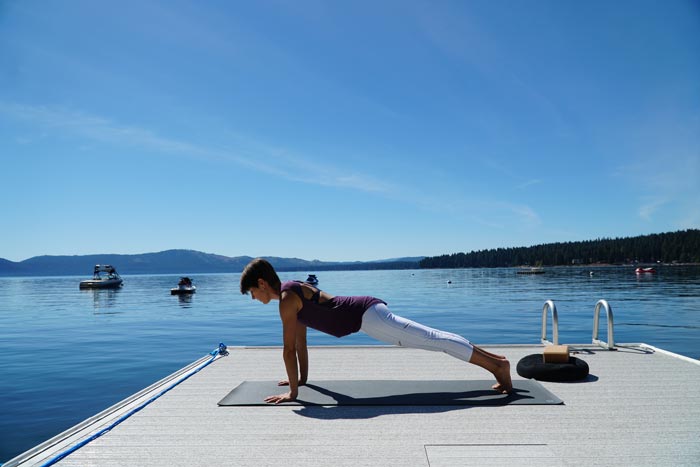
Purpose: It’s time to build even more heat without having to move. Plank makes every muscle of the body help out (just make sure to keep the face soft and relaxed).
Length: Hold 1 minute.
Additional Notes:
- Students can drop the knees to make the pose easier.
- Then, move into Downward Facing Dog to start the next set of poses.
(10) FLOW 1
Purpose: This slow flow is a deliberate way to stabilize the hips, activate the quadriceps, and eccentrically contract the hamstrings. Plus the spine gets long and twisted by the end of it. Start in Adho Mukha Svanasana, then move into:
- 10A: Inhale to Three-legged dog (circles optional to open the hips)
- 10B: Exhale the right foot forward to low lunge (back toes tucked under)
- 10C: Inhale. Use the core to lift the back leg into a crescent lunge. Keep the torso leaning forward and arms back to engage the back body.
- 10D: On the next inhale, bring the hands to the heart in Anjali Mudra.
- 10E: With more weight on the front foot, use the inhale to come to Warrior 3.
- 10F: Inhale bringing the left knee into the chest. Great balance!
- 10G: Vrksasana.
- 10H: Tadasana. Rest and breathe.
- 10I: Utkatasana again.
- 10J: Pavrita Utkatasana, both sides.
Length: 5 cycles of breath each posture
Additional Notes: Students can take a vinyasa in between sides, or simply return to Down dog. Child’s pose is a great restful option, too!
(11) DOLPHIN + THREAD THE NEEDLE
Purpose: Give your legs a break and build strength in the lats, rhomboids, and serratus anterior in Dolphin. Then, elongate the sides of the body by threading the needle.
Length: 1 minute each pose.
(12) FLOW 2
Purpose: Move with purpose in this second slow flow set of linked postures. This will require strength in the legs and core–both of which continue to ground the mind in the present moment. We’ll also build on the poses from the first flow, This will increase confidence each step of the way. Start in Down Dog, then:
- 12A: Inhale to Three-legged dog
- 12B: Use the exhale to step forward into Anjenayasana.
- 12C: Exhale to lift the back leg (crescent) and hinge the torso forward.
- THEN, move between 12B and 12C five times. This will require focus and strength in the new challenge.
- 12D: From Crescent, exhale to straighten the front leg and come into Pyramid Pose.
- 12E: Pavritta Trikonasana (all of the spinal length, hip stability, and twisting have led up to this pose!)
Length: 5 cycles of breath each pose
Additional Notes:
- Start with the blocks at the front of the mat, in case they are needed.
- Use blocks under the hands in order to keep the spine long in every pose.
(13) SEATED FLOW TO COOL DOWN
Purpose: Much of the work to this point has involved hugging toward the center with the legs. Now it’s time to stretch the adductors and let the hips open wide. Start in Upavistha Konasana facing the long edge of the mat.
- 13A: Keep the spine tall as you twist to the right. Hold 1 minute.
- 13B: Add a lateral stretch. Then, lean to the left to stretch the right side of the body. Hold for 2 minutes.
- 13C: Bend the right knee, and face the short edge of the mat. Take pigeon for 3 minutes. This will stretch out much of the work done by the hips earlier in the slow flow sequence.
- 13D: Upavista Konasana. You can use simply as a transition, or hold 1-2 minutes with a forward fold here.
- 13E: Baddha Konasana. Start upright for a few rounds of breath.
- 13F: Then fold forward for 1 minute.
Additional Notes: Prop up the hips as needed with a soft bolster or blanket. Also use blocks to make each pose more accessible, if needed.
(14) BRIDGE
Purpose: It’s time to open the heart with this simple backbend. Plus, you get to lengthen the hip flexors symmetrically and open the shoulders as well. It’s the perfect way to counter the forward folding done in the previous cool-down segment.
Length: Take 3 rounds of Bridge, for 5 rounds of breath each.
Additional Notes: Use a block under the pelvis for a supported Bridge, if desired.
(15) RECLINED POSTURES
Start with Half Happy Baby … then
Purpose: Start the journey to savasana by spending some time on the back. This will be a wonderful time to create more space in the hips after all of the active work. And, we will wring out the spine in one last twist.
- 15A: Ardha Apanasana. Hug one knee into the chest, while the other knee remains bent with the foot on the floor.
- 15B: Ardha Ananda Balasana. Either hug the bent knee out to the side, as a variation on the pose above. Or take assume a half happy baby position with the right leg and reach for the foot.
- 15C: Stay in the previous position, or extend the left leg long.
- 15D: Hug the right knee back into the chest, with the left leg extended. This prepares the body to twist.
- 15E: Reclined Spinal Twist to neutralize the curves of the back and create inner peace.
Length: Hold each variation for 1-2 minutes.
(16) HAPPY BABY
 Purpose: Find symmetry in the hips one more time as the entire back lengthens.
Purpose: Find symmetry in the hips one more time as the entire back lengthens.
Length: 3-5 rounds of breath.
Additional Notes: Roll around if students desire any final movements before savasana.
(17) SAVASANA
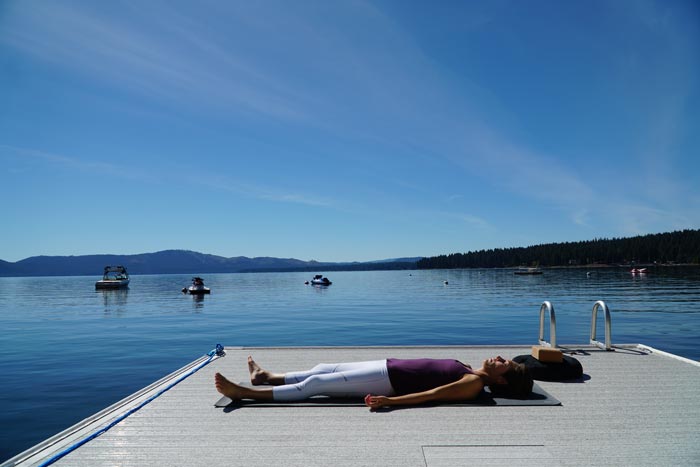 Purpose: The autonomic nervous system (ANS) runs the subconscious mind and performs endless functions of the body on autopilot. When you give your students time to rest in savasana (even after a slow flow class), this entire ANS gets an upgrade. This is similar to ones done on your smartphone or computer. In fact, in savasana, the latest energetic patterns of both the body and mind are memorized. This allows you to operate at a higher level in any given task moving forward.
Purpose: The autonomic nervous system (ANS) runs the subconscious mind and performs endless functions of the body on autopilot. When you give your students time to rest in savasana (even after a slow flow class), this entire ANS gets an upgrade. This is similar to ones done on your smartphone or computer. In fact, in savasana, the latest energetic patterns of both the body and mind are memorized. This allows you to operate at a higher level in any given task moving forward.
Length: 5-8 minutes
Additional Notes: This is a great time to revisit the uplifting theme used throughout class, which can further highlight the innate wisdom already within each of your students.
PUTTING IT TOGETHER
This slow flow sequence to renew your energy is one that can be used at any time of day. The perfect pace will give your students a chance to chance to connect deeply to their bodies. And it will bring clarity to the mind as well.
Take Action Now:
- Download this Slow Flow Sequence
- Get on your own mat and give it a try.
- Then, share it with your friends or with your students!! You’re sure to feel energized and renewed as a result.

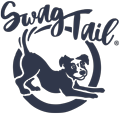
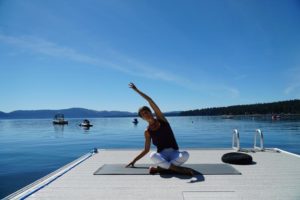







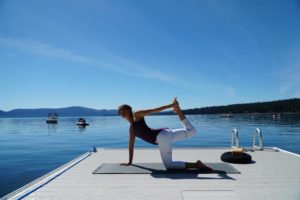

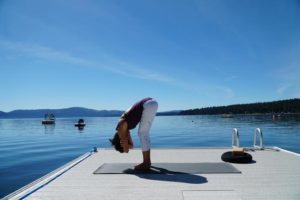


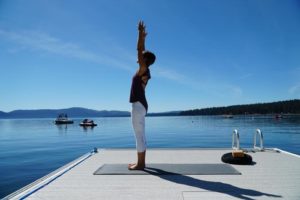





















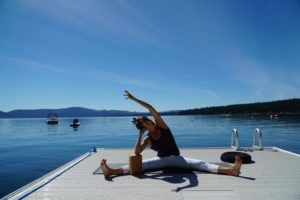



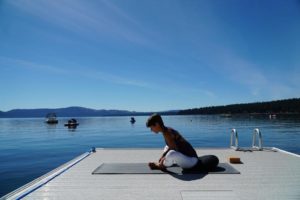
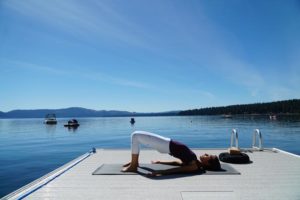














I really love the creativity of this sequence,thank you! Will use it for my next yoga class 🧘🏻♀️🫶🏼